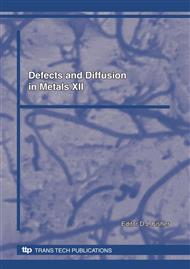p.49
p.55
p.61
p.71
p.85
p.89
p.95
p.105
p.109
Simulation-Based Apparent Surface Free-Energy Analysis for Hydrophobic and Superhydrophobic Surfaces
Abstract:
Micro/nano outcrops generated on hydrophobic surfaces are vital outcomes of the super-hydrophobic mechanism in the fabrication of miniature batteries, super-capacitors, field effect transistors and electrochemical and biological sensors. In systematized posts positioned on superhydrophobic surfaces, it is critical to alter the contact angle, whilst the retreating one depends upon the post size and spacing. In this paper, it is shown that calculation of the apparent surface free energy concerned with the probe liquid surface tension, and both advancing and receding contact angles (a and r respectively), is useful for bringing special attention to shedding more light on the wetting properties of superhydrophobic surfaces. A simulation is performed, in order to present this interesting phenomenon, which is in reasonable agreement with experiment. It is concluded that the computation supports categorizing the wetting phenomena as well as encouraging further progress in the fabrication of MEMS/NEMS structures with high efficiency, degree of precision, accuracy, uniformity, aspect ratio and through-put.
Info:
Periodical:
Pages:
95-104
Citation:
Online since:
October 2010
Authors:
Price:
Сopyright:
© 2010 Trans Tech Publications Ltd. All Rights Reserved
Share:
Citation:


